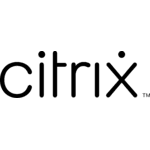Demystifying IT Network Cabling Specifications from 5e to 7A
sponsored by Siemon Company
WHITE PAPER:
This paper discusses the current state of copper-based network cabling standards as defined by ISO and TIA. Learn the difference between category 5e, 6, 6A, 7 and 7A and Class D, E, EA, F and FA.
Posted: 20 Aug 2007 | Published: 01 Aug 2007

|

|
|
Computer Weekly@50: What was happening in July
sponsored by TechTarget ComputerWeekly.com
EBOOK:
The National Museum of Computing has again been looking into Computer Weekly's 50 years of magazine issues for another selection of articles highlighting significant news published in the month of July over the past five decades.
Posted: 08 Feb 2021 | Published: 19 Jul 2016

|

|
|
CW500: A roadmap to software-defined everything – Morgan Stanley
sponsored by TechTarget ComputerWeekly.com
ESSENTIAL GUIDE:
Computer Weekly's CW500 Club heard from IT leaders plotting a roadmap to software-defined everything – this presentation was given by Rob White, executive director of the global database group at Morgan Stanley.
Posted: 08 Feb 2021 | Published: 14 Oct 2016

|

|
|
IT Briefing - Desktop and Application Virtualization: Getting Started
sponsored by Citrix
PRESENTATION TRANSCRIPT:
In this document Barb Goldworm, President, Founder and Chief Analyst of Focus, explains the benefits for desktop and application virtualization.
Posted: 03 Feb 2009 | Published: 30 Jan 2009

|

|
|
Support PCI Security Compliance with Enhanced Solutions from IBM
sponsored by IBM
WHITE PAPER:
This white paper briefly describes PCI requirements, the benefits of compliance and the penalties for noncompliance.
Posted: 13 Feb 2009 | Published: 13 Feb 2009

|

|
|
NetBackup Disk Based Data Protection Options
sponsored by Symantec Corporation
WHITE PAPER:
This paper explains the disk options and their capabilities as well as the other new features in NetBackup 6.5 that make up the Enterprise Disk Foundation, also it provides guidance in choosing the appropriate disk options for your environment.
Posted: 03 Jun 2008 | Published: 01 Oct 2007

|

|
|
Virtualizing the Client PC: A Proof of Concept
sponsored by Intel Corporation
WHITE PAPER:
In this paper Intel IT explores a proof of concept study that examined the viability of abstracting the client operating system from the hardware platform using virtualization.
Posted: 21 Nov 2008 | Published: 21 Nov 2008

|

|
|
Disaster Recovery Solutions from VMware: Transforming Disaster Recovery - VMware Infrastructure for Rapid, Reliable and Cost-Effective Disaster Recovery
sponsored by VMware, Inc.
WHITE PAPER:
VMware Infrastructure is transforming the way disaster recovery is done today and in the future; it changes the disaster recovery paradigm to one that is cost effective, rapid and reliable.
Posted: 20 Oct 2008 | Published: 18 Oct 2008

|

|
|
Going Parallel with LabVIEW Delivers Throughput Gains
sponsored by National Instruments
WHITE PAPER:
In this whitepaper learn how by combining technologies with NI Lab VIEW parallel programming software and NI TestStand test management software, test engineers can create high-performance test systems.
Posted: 16 Sep 2008 | Published: 16 Sep 2008

|

|
|
Intelligence at the Physical Layer: Smart Cabling - Better Security
sponsored by Siemon Company
WHITE PAPER:
This white paper details new intelligent infrastructure management system choices for secure data centers and network infrastructures.
Posted: 20 Sep 2007 | Published: 01 Sep 2007

|

|